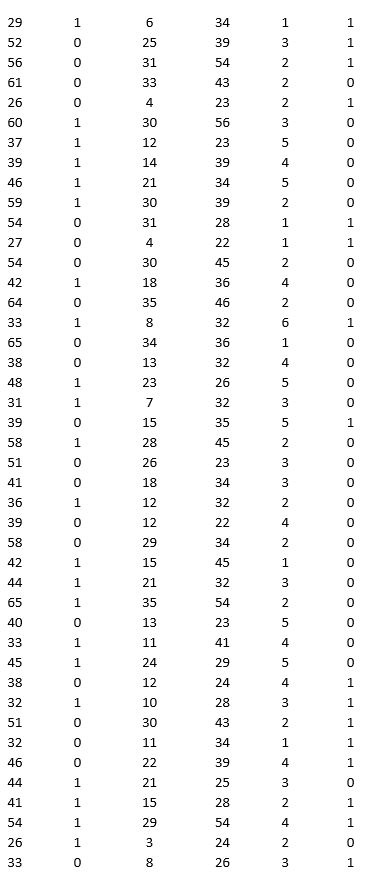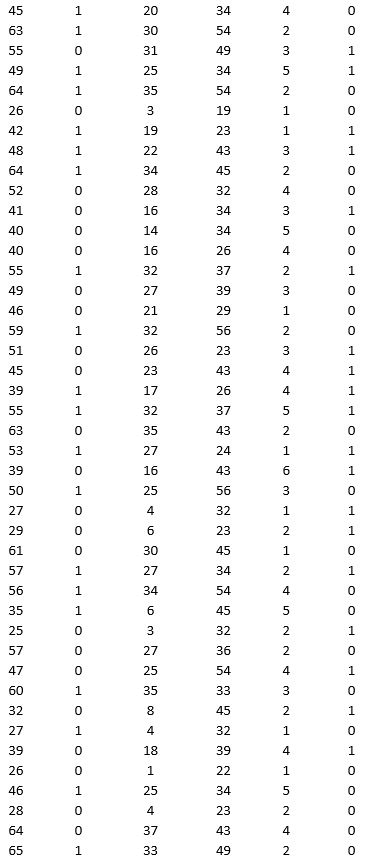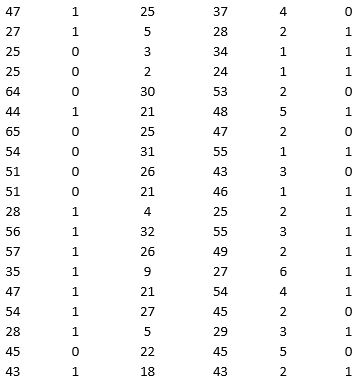A bank is interested in identifying different attributes of its customers and below is the sample data of 150 customers. In the data table for the dummy variable Gender, 0 represents Male and 1 represents Female. And for the dummy variable Personal loan, 0 represents a customer who has not taken personal loan and 1 represents a customer who has taken personal loan.




Partition the data into training (50 percent), validation (30 percent), and test (20 percent) sets. Fit a classification tree using Age, Gender, Work experience, Income (in 1000 $), and Family size as input variables and Personal loan as the output variable. In Step 2 of XLMiner's Classification Tree procedure, be sure to Normalize input data and to set the Minimum #records in a terminal node to 1. In Step 3 of XLMiner's Classification Tree procedure, set the maximum number of levels to seven. Generate the Full tree, Best pruned tree, and Minimum error tree. Generate lift charts for both the validation data and the test data.
a. Interpret the set of rules implied by the best pruned tree that characterize the customers who have taken personal loan.
b. For the default cutoff value of 0.5, what is the overall error rate, Class 1 error rate, and Class 0 error rate of the best pruned tree on the test data? Interpret these respective measures.
c. Examine the decile-wise lift chart for the best pruned tree on the test data. What is the first decile lift? Interpret this value.
Definitions:
Q3: Which of the following is a preventable
Q4: Fetal alcohol syndrome is most often characterized
Q6: To avoid problems in interpreting the differences
Q7: The principle of using the simplest meaningful
Q16: The most common cause of sudden cardiac
Q23: The Gatson manufacturing company has estimated the
Q25: The Golden Jill Mining Company is interested
Q37: Compute the geometric mean for the following
Q43: A crosstabulation in Microsoft Excel is known
Q58: A soft drink manufacturing company has 3